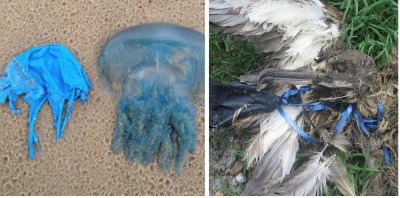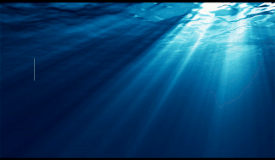 PHILIPSBURG:--- The Nature Foundation St Maarten would like to raise awareness about the harmful impacts of balloons on our environment, marine, and wildlife and is asking the community to disregard the usage of balloons. Balloons have been the primary accessory of celebrations since the 1800s. They serve as fun and pretty decoration for birthdays, weddings, graduations, festivals, and many other events. However, after the party ends, balloons can remain in our environment for many years. During this time, they threaten the health and survival of countless animals via ingestion and entanglement.
PHILIPSBURG:--- The Nature Foundation St Maarten would like to raise awareness about the harmful impacts of balloons on our environment, marine, and wildlife and is asking the community to disregard the usage of balloons. Balloons have been the primary accessory of celebrations since the 1800s. They serve as fun and pretty decoration for birthdays, weddings, graduations, festivals, and many other events. However, after the party ends, balloons can remain in our environment for many years. During this time, they threaten the health and survival of countless animals via ingestion and entanglement.
In general, there are two types of balloons: latex and mylar. Latex balloons are the more common type made out of stretchy rubber material. Mylar balloons are the usually bigger, fancy balloons made out of shiny, non-stretch plastic foil. Although latex balloons are regarded as biodegradable, this is a misrepresentation, as latex balloons can still take months to years to completely break down, and can cause a lot of damage in that time-frame. Mylar balloons are not considered biodegradable and can remain in the environment indefinitely.
Balloons are easily mistaken as food by birds, sea turtles, fish, dolphins, and other animals. Because balloons do not break down, they can easily get stuck in the animal’s throat, causing the animal to choke; or they can pile up and create a blockage in the animal’s stomach causing the animal to starve to death. Sea turtles are especially susceptible to these risks. Brightly colored balloons floating in the ocean can look a lot like jellyfish and sponges, a primary food source for many sea turtle species. One study by the University of Queensland found that 1 in 3 sea turtles have eaten marine plastic, including balloons. In addition, many animals, especially birds, can become entangled in balloon strings, causing suffocation and restriction of movement and feeding. Most often balloon strings are made out of plastic, meaning they do not biodegrade and can go on to harm multiple animals.
Even if balloons are not released during parades and celebrations, balloons can easily be blown away due to the wind, rain and accidental release, for example, numerous balloons were lost during the recent carnival balloon parades. What goes up must come down and ends up in our environment, several balloons were found to be in our waters and nature after before mentioned carnival parades. If balloons are let go of, many of them burst in the atmosphere and the small pieces end up back in the environment. These small pieces are ingested by smaller organisms and remain in their system. When the smaller organisms are eaten by larger organisms, the pieces accumulate in the larger organism at a higher concentration. This continues up the food chain and causes large animals like dolphins and even whales to have plastics in their tissues and puts humans at risk as well.
Nature Foundation is committed to the reduction of all plastic pollution, including balloons. Therefore, we are providing the following tips on how you can save the environment by reducing and eliminating balloons from your life:
1. Under no circumstance let go of balloons outdoors, there are many alternatives to releasing balloons including lighting candles, planting flowers or trees, blowing bubbles, these options are just as good if not better- for celebrating achievements of honoring a loved one without harming the environment.
2. Use reusable decoration instead of balloons, try using flags, banners, kites, garden spinners, and dancing inflatables. These options are reusable, saving you money in the long term and improving the environment.
3. Or use biodegradable decorations, such as paper streamers or tissue paper pom-poms.
4. If you have to have balloons, go for the latex variety over mylar. While neither of these options is good for the environment, latex is better. Also, try using natural cotton string rather than plastic ribbons to tie your balloons. When you are done with the balloon, make sure to pop it and dispose of it properly.
5. Lastly, pick up any balloons and ribbons you see on the ground! Even though you didn’t litter the balloon, it is up to all of us to work together and make sure our environment is safe and healthy for our marine and wildlife.













